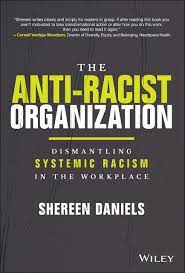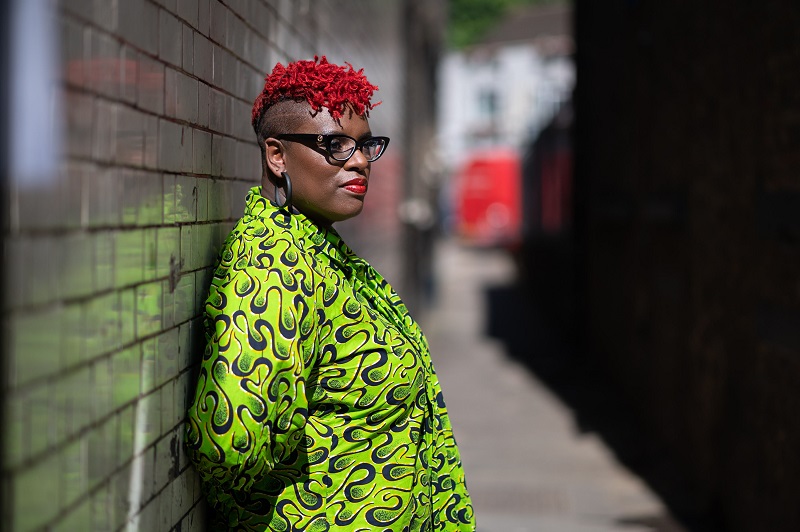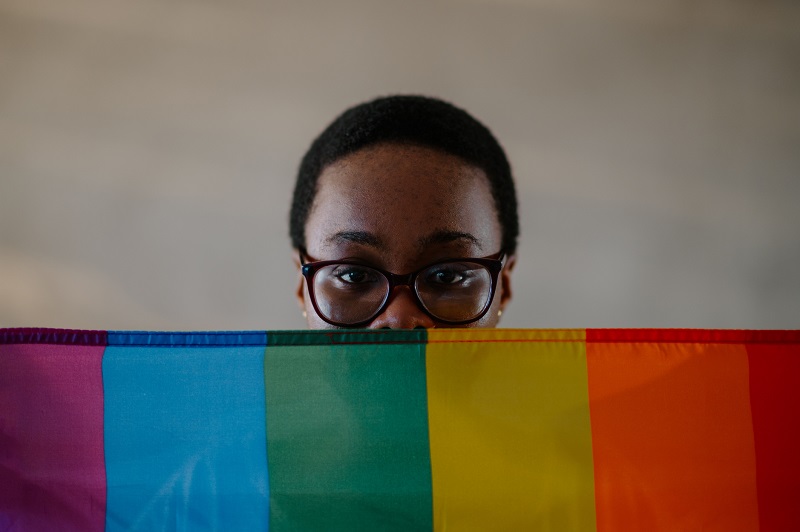“The issue of systemic racism is about addressing how we are dehumanised in the workplace,” Shereen Daniels argues. “It’s why I always say, ‘don’t talk to me about belonging and inclusion if you can’t talk to me about why we’re excluded in the first place.’
“Trying to convince white majority organisations that why they should care is that ‘it’s financially in their interests’ reduces us to units of money, the value of stock. The last time we were seen as economic units of financial upside, it was chattel slavery.
Daniels reckons that if she’d been given a pound for every piece of online and offline advice she’d received suggesting that she spent more time as an HR professional emphasising the financial benefits of diversifying teams, she’d have enough to buy four houses. Mortgage free!
“I’m always very clear when I use the term racism so that we understand racism as a system. This is about the racial hierarchy, with white people at the top. But it is also about the hierarchy among Black people, with Black women being right at the bottom.
“I don’t like lumping people together under ethnic minorities, BAME, people of colour, or whatever. If I must, I use the term Global Majority because, statistically, that’s true if we’re going to group Black, Asian, Brown, dual-heritage, Indigenous to the global south and have been racialised as ‘ethnic minorities’. But even with that, we assume everyone is impacted by racism in the same way. So, it’s all about degrees.”
Daniels is the MD of HR rewired, an advisory firm that partners with companies wanting to actively advance racial equity in the workplace. In the last 20 months, her career has taken her in a new direction as a leading light in combating racism in all its forms.
The anti-racist organisation
She’s written a best-selling book, The Anti-Racist Organization: Dismantling Systemic Racism in the Workplace, has a podcast series, an annual conference, has recorded over 200 YouTube videos and hosted 40 LinkedIn live broadcasts dedicated to educating, informing (and entertaining) global audiences about the topic of anti-racism. Daniels was recognised as a LinkedIn Top Voice 2020 and 2022, named HR Magazine’s Most Influential Thinker for 2021 and has had her work and story featured in Forbes twice.
The catalyst for all this activity was Amy Cooper. “She is the individual who, on the same day that George Floyd was murdered, decided to weaponise her race by calling the police on a Black man who dared to tell her she wasn’t allowed to walk her dog in a part of Central Park where she was not allowed to walk her dog,” Daniels recalls.
“She made it known that she was a white woman threatened by a Black man. Seeing that – I just kept watching it repeatedly – prompted me to record my first video.”
Launching a vlog might seem an odd thing to do for someone who describes herself as an introverted extrovert and socially awkward. But, as Daniels points out, “video doesn’t talk back. It was like therapy. My views of the world are out there in the public domain. Not everyone agrees with me, but that hasn’t stopped me from carrying on. My end goal was never about finding more clients or growing the business but trying to support organisations to transform the experiences for Black colleagues. I’m here from longevity, not notoriety.”
Her book pulls no punches, nor does it pander to people’s sensitivities. It includes research, case studies, advice, tips, and frameworks, such as the Race Equity Maturity Model, and is aimed primarily at white leaders who run companies whereby they are in the majority.
“The reality is the people who control, reinforce and amplify exclusion, racism, and discrimination are the people who have these magical seats at the table,” she argues. “Obviously, I’m addressing it to them because they have a say about whether their organisation does something about this.”
And it’s had the desired effect. Many senior white individuals who have read the book publicly shared what they have gained from it. At the same time, Black professionals have praised Daniels for honouring their experiences and also highlighting how they had been complicit.
DEI practices fell short
The book is definitely not about DEI but racism in its truest and ugliest form. While many organisations had dedicated budgets and resources to diversity and inclusion practices, they had not fully tackled the root causes of exclusion. Daniels likens the approach to the definition of insanity: doing the same thing over and over again, hoping for a different outcome. She explains: “My argument is, why are you going to put even more resources into a function that has never historically shown to have an impact? You just keep throwing money and talking louder about diversity and inclusion. Yet again, it still got co-opted because nobody wanted to talk about racism.
“Unless they were only talking about hiring more Black people, it became about women – excluding Black women – then about every other protected characteristic. And so, they used the momentum anchored in the lack of humanity afforded to Black people to progress the agenda for everyone else but Black people. How does that even make sense?”
LinkedIn has provided a useful platform for reaching a wide audience around the world, but the downside has been the way that complex issues have been reduced to soundbites. She says: “Social media rewards anything that inflames individuals. People pick on the most overt forms of racism and write things to provoke a reaction because a reaction keeps them relevant and trending and grows their follower count. That was never my primary focus. I like to think I write thoughtful and nuanced posts that provoke thought and intentionality.”
Internalised oppression
Surprisingly, Daniels has been attacked by Black, as well as white, people and makes the point that, while there may not be universal support for her stance, there was a role for everyone in tackling systemic racism in the workplace. In the book, she stresses how systemic racism rewards apathy, obedience, and compliance. And Black professionals can still be impacted in not-so-obvious ways.
“Every day, I work on undoing internalised oppression, that voice that tries to caveat how you show up, what you say, the way you say it, for fear of making white people uncomfortable or not being accepted in white-majority spaces. I talk about it very openly in my videos. We forever must remain students because, if we keep positioning ourselves as the teacher, thinking there’s no work to be done, that is how we remain complicit in this system called racism.”
The idea that everyone has a role to play, including Black people in leadership positions, is the one key message Daniels hopes readers of the book will remember most. People needed to step differently, go above and beyond being allies and challenge their values and beliefs about how the world is wired and their role in preserving and upholding cultures and working practices that are harmful to so many colleagues.
She adds: “It’s always easy to blame institutions and organisations, but they aren’t sentient beings. They are made up of individuals, and we all have to take accountability and responsibility. I want people to hold that in their minds rather than thinking they can close the book and feel better about themselves for knowing a bit more about racism, yet immediately make it somebody else’s job to do the work to dismantle it.”
Daniels is justifiably proud that her book is having an impact. She’d always had ambitions to be a writer but thought more along the lines of romance novels rather than the first business book on racism from a UK perspective.
This, together with her regular videos and plans for TV, has placed her where she needed to be to do what she was meant to do. “The person that has allowed that to happen has been me,” she says. “I’ve not sought permission, not waiting for someone to give me a platform. I’m doing something that has had an impact but that I also enjoy, which sounds strange considering the subject matter, but I enjoy it because I’m able to do it the way I want to.”

The Anti-Racist Organisation: Dismantling Systemic Racism in the Workplace is available from Amazon and other leading bookstores.









